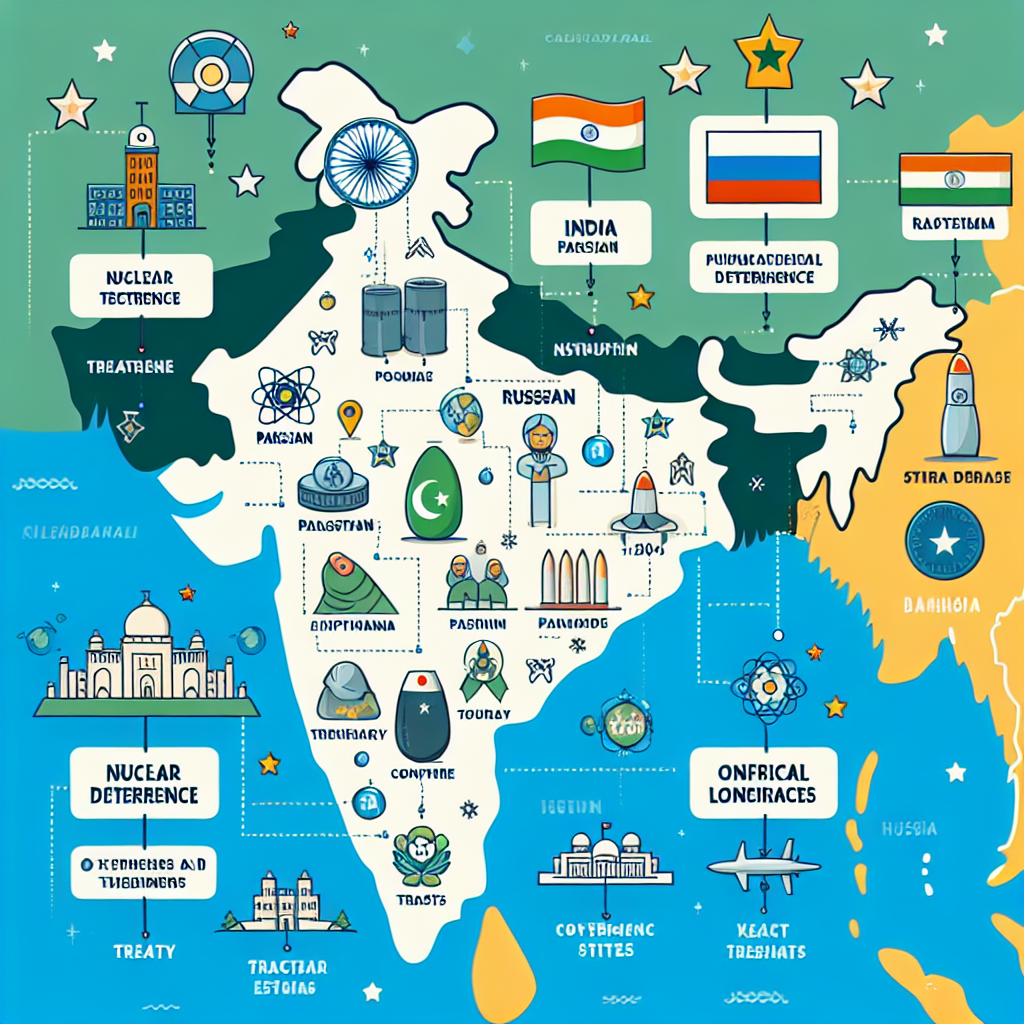The Evolution of Nuclear Deterrence: From India and Pakistan to Putin's Strategy
The geopolitical landscape of the late 20th and early 21st centuries is punctuated with critical moments that redefined nuclear deterrence. The narrative of nuclear strategy has evolved from the experimental phase seen in the 1970s to the brinkmanship and calculated deterrence observed today. Two epochal moments in this evolution are India’s nuclear tests and Pakistan’s subsequent nuclear developments, and the modern adaptation of these strategies by Russia under Vladimir Putin.
The Genesis of South Asian Nuclear Deterrence
India’s First Nuclear Test:
In 1974, India conducted its first nuclear test, code-named "Smiling Buddha." Contrary to its name, the test was far from peaceful as India asserted. This explosion, which they termed a "peaceful nuclear explosion" (PNE), marked India’s entry into the nuclear club. However, India did not rapidly advance its nuclear arsenal post-1974, maintaining a somewhat ambiguous stance on its nuclear capabilities.
Pakistan’s Response and Nuclear Proliferation:
The subcontinent's nuclear narrative took a decisive turn with Pakistan’s nuclear ambitions. Under the aegis of AQ Khan, Pakistan accelerated its nuclear program, reportedly testing its first bomb with China’s assistance. This development fundamentally altered the strategic balance in South Asia. Khan’s activities weren’t limited to Pakistan alone; he notoriously engaged in nuclear proliferation, notably to Iran, which added another layer of complexity to global nuclear non-proliferation efforts.
The Kargil Conflict: A New Dimension of Nuclear Deterrence
Escalation in Kargil:
In 1999, the Kargil conflict between India and Pakistan introduced a novel dimension to nuclear deterrence. The argument posited by Pakistan was ingenious yet perilous: possessing nuclear weapons could serve as a shield, preventing an all-out nuclear war while allowing for conventional military engagements. This concept implied that as long as both sides maintained their nuclear arsenals as deterrents, they could engage in conventional warfare without escalating to a nuclear level.
Intervention and De-escalation:
The conflict brought the subcontinent dangerously close to a nuclear exchange. The international community, particularly the United States, intervened with diplomatic fervor to de-escalate the situation. Both nations, under intense global pressure, pulled back from the brink, showcasing the delicate balance that nuclear deterrents impose on regional conflicts.
The Russian Adoption of Deterrence Philosophy
Putin’s Conventional War Doctrine:
Fast forward to the contemporary era, Vladimir Putin has adeptly integrated this doctrine into his military strategy. The premise is straightforward but chillingly effective: engage in conventional warfare while brandishing nuclear deterrence to prevent external intervention. Essentially, Putin’s message to the world is clear—interfere with Russia’s conventional wars at your own peril, as nuclear retaliation is on the table.
Strategic Implications:
Putin’s adaptation of this deterrence strategy underscores a profound shift in international conflict management. This strategy leverages nuclear capability not just as a deterrent to nuclear war but as a means to secure strategic advantages in conventional conflicts. The implication for NATO and other global powers is significant; it necessitates a reevaluation of engagement rules and deterrence postures.
Deterrence Theory: A Double-Edged Sword
Pros and Cons:
Nuclear deterrence, by its very nature, is a double-edged sword. The deterrent effect can stabilize regions by preventing full-scale wars. However, it also incubates a persistent state of tension and the potential for miscalculation. The shadow of mutually assured destruction (MAD) keeps adversaries in check but also risks catastrophic consequences if deterrence fails.
Case Studies in Miscalculation:
Historical precedents, such as the Cuban Missile Crisis, underscore the thin line between deterrence and disaster. In the context of South Asia and Russia’s current doctrine, any misstep or miscommunication can have irrevocable consequences. The balance hinges on rational actors making calculated decisions under intense pressure, a scenario fraught with peril.
The Future of Nuclear Deterrence
Evolving Dynamics:
The future of nuclear deterrence is set against a backdrop of evolving geopolitical dynamics. Nations like North Korea add unpredictability to the deterrence equation. The challenge for global powers lies in crafting strategies that mitigate risks while deterring adversaries effectively.
Arms Control and Diplomacy:
Effective arms control agreements and robust diplomatic channels are pivotal. Tools such as the New START Treaty between the US and Russia, and diplomatic engagements with countries like Iran, are crucial in maintaining a semblance of order in a potentially chaotic nuclear landscape.
For further reading on these evolving dynamics, consider exploring this insightful article on nuclear deterrence strategies.
In conclusion, the doctrine of nuclear deterrence has transformed significantly from its inception in the Cold War era to its current manifestations in South Asia and Russia. The delicate balance maintained by nuclear-capable states ensures a tenuous peace, punctuated by the ever-present possibility of escalation. Understanding the nuances of this strategy is crucial for navigating the complex terrain of modern international relations.
Related News
- Shifting Paradigms in Nuclear Deterrence: A New Era of Strategic Complexity
- The Ever-Present Threat: Analyzing the Odds of Nuclear Deterrence Failure
- Navigating the Perils of Nuclear Deterrence: A Call for Collective Responsibility
- The Global Fallout: Analyzing the Dire Consequences of a Hypothetical India-Pakistan Nuclear War
- The Transformative Impact of Nuclear Energy on Warfare
